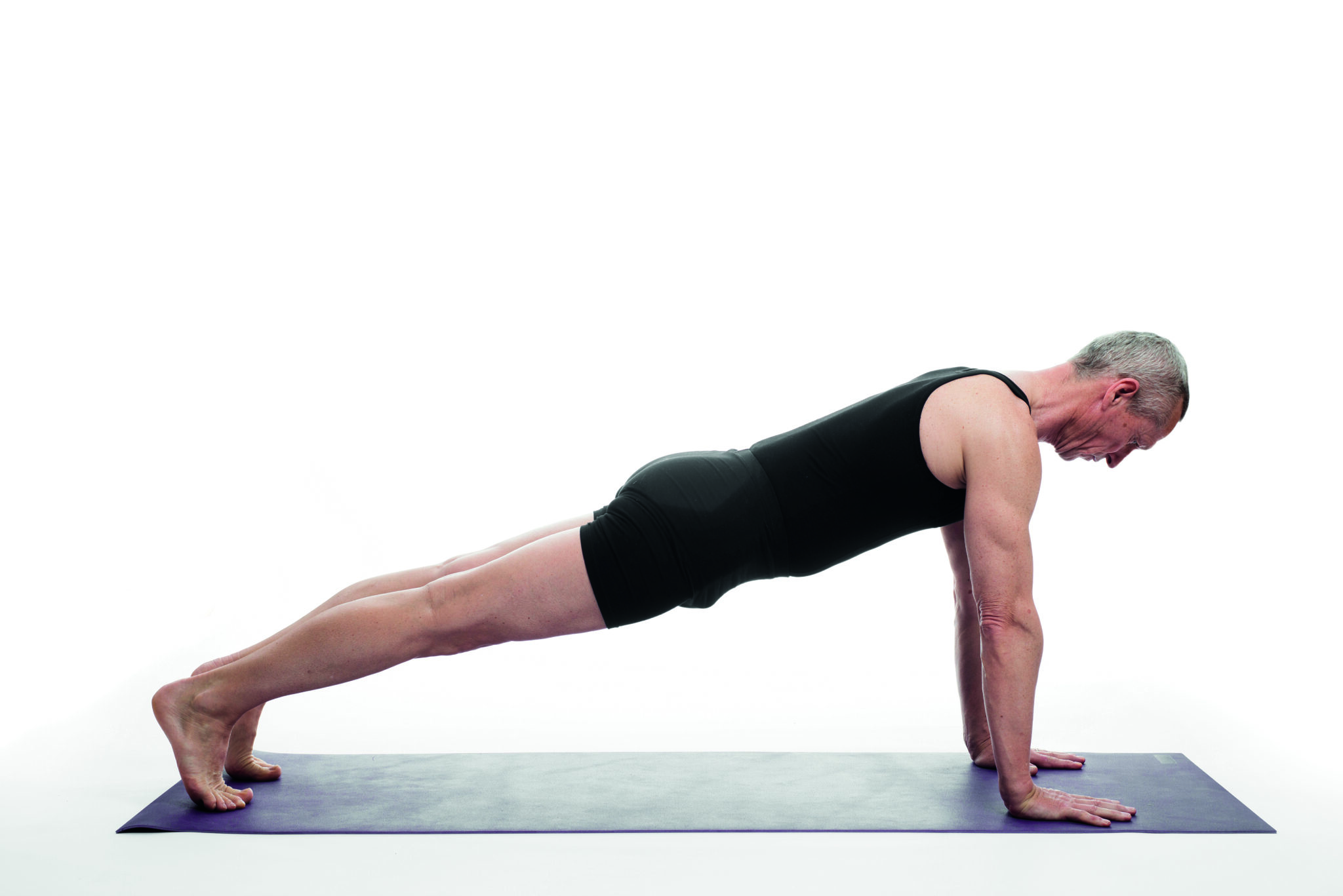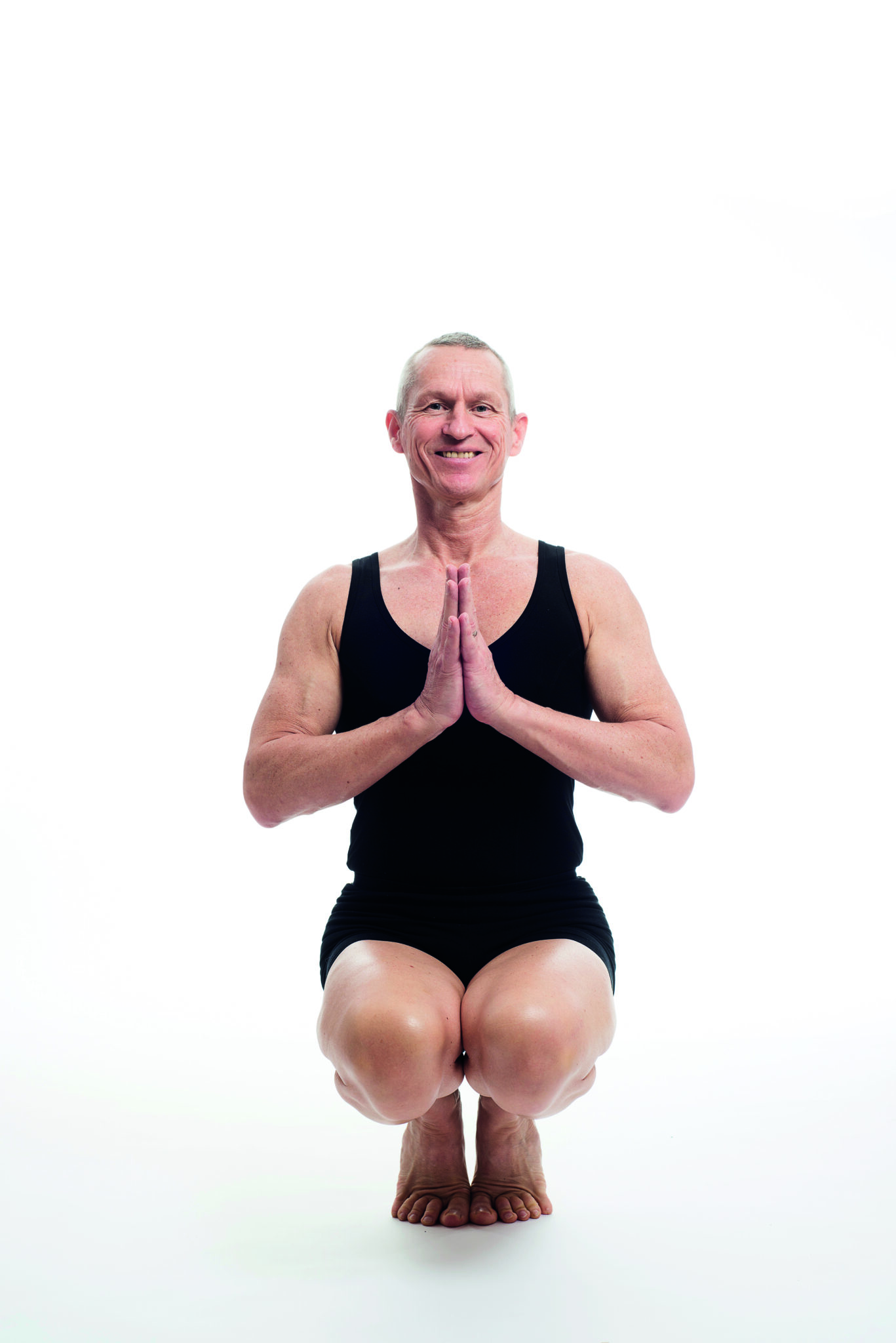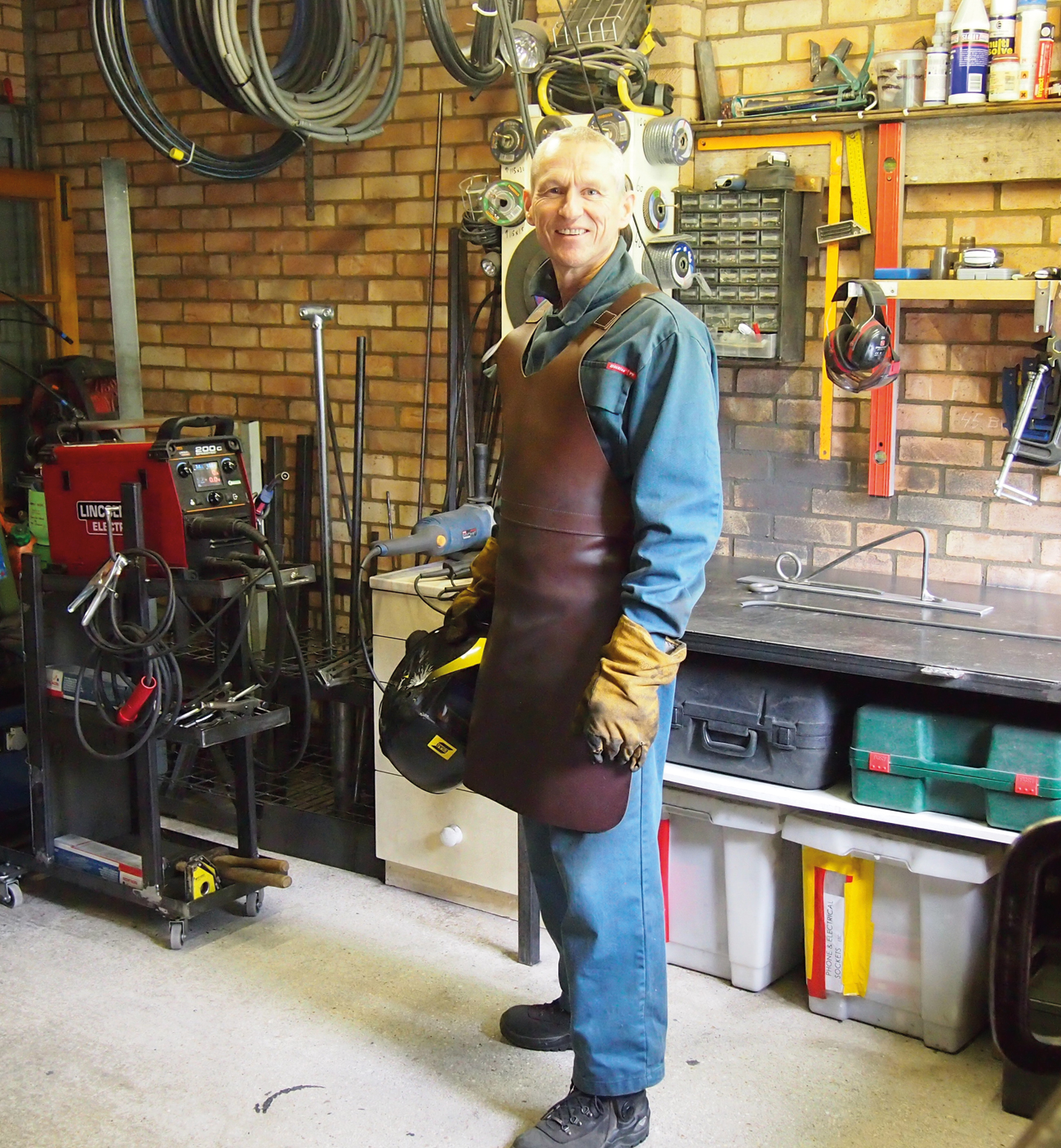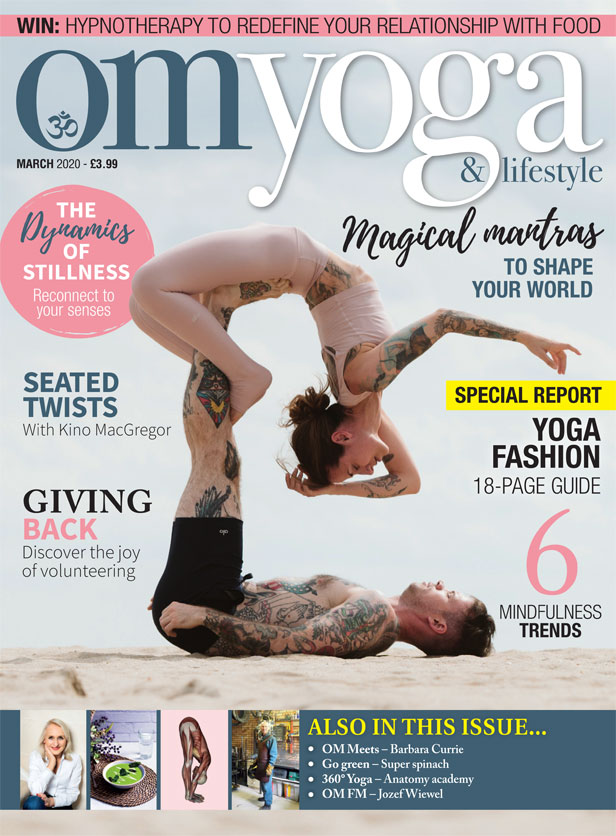
Just Jozef
OM catches up with Jozef Wiewel, a well-known and respected teacher in the UK who’s been exploring the world of yoga since the 1970s. By Indira Das-Gupta
Jozef Wiewel is a senior yoga teacher and widely known throughout the UK, where he’s available for workshops, teacher trainings and posture clinics. He teaches contrasting styles, from Yin to Hot Yoga, reflecting the breadth and depth of his experience. Many of his courses qualify for CPD (continuous professional development) points. Away from the mat, he’s also a keen metal worker, creating yoga-inspired scuptures. He’s a popular and sought-after teacher but still took time out to chat to OM about his love of all things yoga.
What first drew you to yoga?
It was actually the mystical side of yoga that first got me into it. I did some Kundalini Yoga back in the mid 70s when it was mostly hippies that were into it. You would do it in someone’s back room with a nice patterned carpet. Then eventually I started getting more into the asanas. At the time I was doing martial arts and the yoga poses were pretty similar so they seemed to complement each other.
How did yoga fit into your earlier work at a specialist clinic for professional sportsmen and dancers?
In the 80s, I worked in a clinic where many of our clients were professional footballers, such as Bryan Robson (former England captain). I started their treatment with deep tissue massage but then I introduced some yoga. I didn’t call it yoga because back then footballers didn’t do yoga: I called it stretching. A lot of the injuries I dealt with were from overuse and then not stretching at all afterwards so it really helped in their rehabilitation and afterwards. I also worked with dancers at the Bolshoi Ballet who were very easy to work with as they already knew their bodies.
How have your own injuries influenced your teaching methods?
Yoga was taught very differently in the past. Teachers would basically try and force you into poses by lying on top of you or pushing down on your hips in poses such as Uppavista Konasana. There was no consideration that we are all built differently and that maybe our joints just would not allow certain poses. So after years of forcing my body into poses, overdoing it and showing off when I was demonstrating, I started to get problems. Until that point I had thought I was invincible. So I started getting into the anatomy of yoga and that’s when I began to develop my current approach to teaching: bring the body to the posture, not the other way round! You can’t expect 20 people in a class to do exactly the same thing. Krishnamarcharya taught people privately and adapted the yoga to their bodies but that’s not the easiest way to make a living. So I am very strict about what I teach, particularly in beginners classes and only teach poses that I regard as safe and in a way that I believe is safe. For example, in Warrior 2 I ask people not to go too deep and to keep their shoulders in line with their hips. I also always bring my anatomy skeleton to classes to show people where there might be restrictions. I try to explain to people that yoga is not about going deep but moving in a safe and responsible way. 
You teach Hot Yoga: how does your approach to teaching differ from Bikram-style Hot Yoga?
I have refined the traditional 26 poses and taken some away. In my Hot Yoga Level 1 for example, I don’t teach Ardha Matsyendrasana as too many things can go wrong. So I replaced it with Supta Matsyendrasana, which I believe is safer for students of that level. But it is a great pose with many benefits, so I reintroduce it for my Level 2 Hot Yoga students. I also have two levels of beginners classes so I can make sure that what I teach is appropriate for the level of people in the class. I also deliberately avoid using the language of Bikram where there is an emphasis on pushing. You already have to push yourself in life: why come to yoga just to push yourself some more?
You lead the Hot Yoga teacher training course at Camyoga. Do you think it’s too easy to become a yoga teacher now?
You also teach Yin. What is it about this style of yoga that appeals to you?
We are churning out too many unprepared teachers. You can’t just give them a certificate and wish them the best. What really matters is not knowing the names of all the muscles but the practical application. That’s why anatomy should be a constant in any teacher’s career. Then you can teach variations with more authority and in a way that makes sense.
You also teach Yin. What is it about this style of yoga that appeals to you?
It’s the total opposite of Hot Yoga, but I love it. I teach a non-stretchy version of Yin; I actually call it Passive Restorative Yoga and I focus on stillness and breath. Nowadays it’s become an art to relax. With the pressure away from the joints you can visualise your breath going to the places that need it the most which can be healing and nourishing.
What have been the highlights of your career so far?
I love it when I see people having those lightbulb moments where they just get it. Also when a student comes to me that has never done yoga before and then eventually goes on to become a great teacher, that is the ultimate reward.
What advice would you offer to anyone who feels they don’t have ‘the right body’ for yoga?
Blokes in particular always seem to say that they are not very flexible when they first start. I always reply that I’m happy if they are not flexible because that’s not what yoga is about. It’s not about mastering the postures but transforming yourself. It’s about safe, responsible movement, and increasing flexibility is a happy bonus. If you are patient then eventually you will reap the rewards. There is nobody who shouldn’t do yoga.
What do you do when you’re not doing yoga?
As well as bending and shaping my own body and teaching others to do the same, I also work with metal, bending and shaping it into sculptures inspired by yoga asanas.
What are your plans for the future?
Functional anatomy in yoga is a real passion of mine as you might have guessed and I’m working on a two-day foundation course and also workshops for both students and teachers so that they can practice or teach yoga safely.
“Blokes in particular always seem to say that they are not very flexible when they first start. I always reply that I’m happy if they are not flexible because that’s not what yoga is about. It’s not about mastering the postures but transforming yourself. It’s about safe, responsible movement, and increasing flexibility is a happy bonus.”




